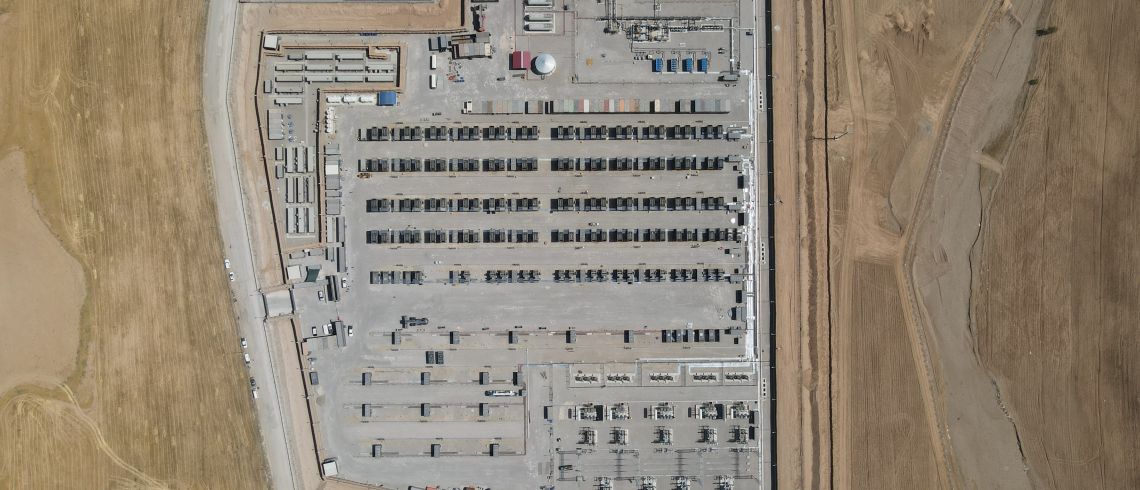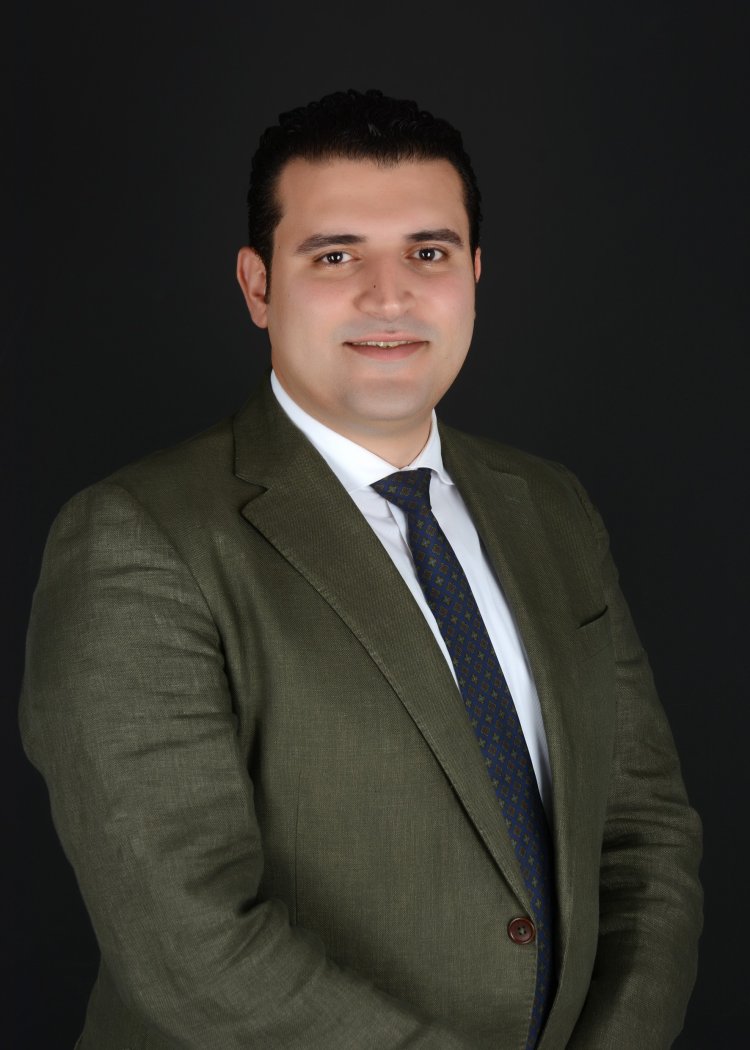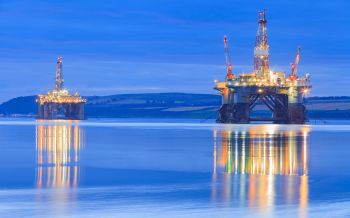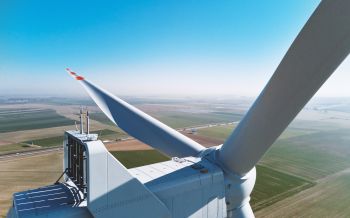For Scottish power solutions provider Aggreko, generating electricity from flare gas is the best – and easiest – solution to the problem of flaring, which the International Energy Agency (IEA) describes as “an extraordinary waste of economic value.” According to the World Bank, 144 Bcm of gas – 20 Bcm less than Africa’s entire gas consumption last year – was “needlessly burnt” in flares at upstream oil and gas facilities across the world in 2021, resulting in ~400 mtCO2e emissions. But as Hesham Tawfik Elshamy, Aggreko’s senior regional sales manager for northern east Africa, explains to Gas Matters, not only can flare gas-to-power reduce flaring’s effect on the environment and cut a client’s carbon footprint, but also generate significant cost savings.
Proven technology
In September, Aggreko announced it had completed a 10-MW flare gas-to-power project, Africa’s largest, in Egypt. Looking to drive greater efficiencies for a client’s E&P operations, Aggreko supplied a solution that first consisted of standard diesel generators, which were then replaced by generators utilising flare gas. Connected to 26 wells through 30 km of overhead transmission, this bespoke solution centres around a centralised power station and saves the client around 80,000 litres of diesel per day. The project is scalable, offering the option to increase capacity up to 15 MW.
“Just by shifting from diesel to flared gas, which was considered a waste for them before, as a source of fuel, the total savings for the client are around USD 25 million a year,” says Elshamy. “Their environmental savings are also huge: around 50 tonnes of CO2 a day. And considering that Egypt is not self-sufficient when it comes to its diesel consumption, this type of solution minimises the need for diesel imports, adding value not only for Aggreko and the client, but also the country itself. The project has been a great success for us.”
Aggreko first entered the Egyptian market in 2015. In the seven years since, “we’ve discovered that Aggreko has a unique position in the country,” says Elshamy. “Its point of differentiation is quality, flexibility and fast-track delivery. We found that most of the clients here were cautious when it came to the needs of a small-scale gas generator – were afraid, from a safety point of view, of using that concept.”
Minimal non-productive time and 100% power reliability are the most important things for oil and gas operators.
To stand out from its competitors, Aggreko set out a strategy for Egypt that focused on a single sector. “We chose the oil and gas sector because we saw there was a huge opportunity for Aggreko there,” Elshamy explains. World Bank data shows that Egypt was the twelfth biggest flaring country in the world in 2021, flaring 2 Bcm of gas. This volume “can generate – if we have everything consolidated in one plant, and 0.25 MMcm can generate 1 MW – a huge amount of power,” Elshamy highlights, adding that a centralised power solution guarantees “minimal non-productive time and 100% power supply reliability, which are the most important things for all oil and gas operators.”
Key for the client, but also Aggreko’s growing reputation in Egypt, was the company’s “readiness and fast-track delivery” of the project, says Elshamy. “It was a turnkey solution as well, including everything from the engineering, execution, delivery, installation, commissioning and, currently for Aggreko, the running of the site and full operational maintenance,” he adds. “The contract duration is around five years.”
On a government level, Egypt is, through its national oil company, EGPC, “exploring all applicable solutions for the flow of flared gas, such as gas-to-liquids and gas compression,” Elshamy says. “But the easiest one is flare gas-to-power, which thanks to Aggreko is now a proven technology in the country. We have five other smaller scale flare gas-to-power project being developed now here.”
African focus
Based in Cairo, Elshamy was until last August the general manager for Aggreko in Egypt. In his new role as senior regional sales manager for northern east Africa, he now also handles the development of the company’s business in Libya and Sudan. In Libya’s case, two years after the ceasefire that looked to end the Second Libyan Civil War of 2014-20, Egypt’s western neighbour has great potential for flare gas-to-power projects, Elshamy says – World Bank data shows it was the world’s ninth biggest flaring country in 2021, with 5.9 Bcm of gas flared – but due to ongoing security concerns and the international sanctions still imposed on Libya, “as an international services provider, we need to dig a little more into the matter,” he points out. “We’ve submitted a couple of offers for larger scale, 20-30 MW power plants for some of our clients there, but nothing has been developed yet.”
When it comes to Sudan, earlier in October Elshamy met its energy and petroleum minister to discuss the prospects of flare gas-to-power projects there. “In Sudan, we’re likely to start out with smaller scale projects, 2-3 MW plant deals, and then move on to larger ones.”
Outside his north-east African remit, Elshamy says the two most promising countries for Aggreko’s flare gas-to-power business in Africa are Algeria and Nigeria, sixth and seventh respectively in the World Bank’s list of the world’s biggest gas flaring countries in 2021, with Algeria flaring 8.1 Bcm – equivalent to 8% of the gas it produced, BP data shows – and Nigeria 6.6 Bcm, equivalent to 14.3% of gas it produced last year.
Aggreko has already been involved in providing power generation solutions to clients in Nigeria. In the case of MTN, the country’s leading telecom company was dealing with frequent blackouts and high costs due to its reliance on a combination of grid power and diesel generators. In 2018, Aggreko installed five QSK 60 gas generators units for MTN, resulting in a total of 5 MW for the site. The kit installed was local, reducing delivery time – the solution took two weeks to install – and Aggreko recommended the addition of its battery storage solution to provide further resilience and increase the green credentials of the facility.
We help clients understand what to expect in the process to net zero.
Following its work with MTN, Aggreko was approached by other Nigerian clients, and the company is now expanding its business in the country to include flare gas-to-power. “We’ve submitted several proposals and are at the final stages of signing a new flare gas-to-power contract in Nigeria, and at 25 MW, it will be the biggest one there,” says Elshamy. “Algeria and Nigeria are two countries Aggreko will be focusing a lot on, and I do believe that Aggreko is also doing a great job in central and western Africa, especially after the success of a project in Benin.”
But the jewel in the crown of Aggreko’s flare gas-to-power business is outside Africa, in Iraqi Kurdistan. “At 168 MW, it is the biggest flare gas-to-power project in the world,” Elshamy says. Built during the height of the Covid-19 pandemic, “the technology and project was delivered in record time – six months – including the overhead transmission line and pipeline to gather the flare gas. The plant has been running for a year and a half and the client keeps extending and expanding the contract, which is a great vote of confidence.”
Located near the Sarqala oil field in the south-east of Iraqi Kurdistan, the plant runs on ~40 MMcf/day of associated oil gas and saves 840 tonnes of CO2 per day, cutting flaring by a third, according to Aggreko. Built using modular gas generators, it can be scaled up or down in response to changing gas volumes.
Meanwhile, the development of flare gas-to-power projects in countries where the solution is new is helping expand Aggreko’s global pool of skilled workers. “We cannot depend 100% on a local team at the start,” Elshamy explains. “But at Aggreko we already have the know-how – the required people that possess the know-how all over the world.” When starting work on a new project, “we assign people to it from our teams around the world, as it’s important to have the required quality and skillset on site, and in the beginning this may mean a mix of 80/20 between the local team and Aggreko experts on the ground, and for one project, after six months, I can confirm that’s gone to 50/50. During a project’s duration, the percentage keeps changing as the local team learns more, and by the end we sometimes find we’re running 100% with a local team. And then this local team can be utilised for another project, because by then we have the required skills in the country.”
Power cooperation
This year marks 60 years since Aggreko was founded. Having made a name for itself as a provider of mobile modular power and temperature control services, the company is now focusing, on a global level, on energy efficiency and supporting its clients through the energy transition, helping them “understand what to expect in the process to net zero,” says Elshamy. “Aggreko evolved to supplying gas-to-power solutions, or hybridisation systems that combine diesel and gas,” he explains. “It now has a solution for decarbonisation or supporting energy transition targets, definitely for 2030 goals, for most of its clients.”
Access to power is not a problem for Egypt anymore, but we need to focus on E&P to enhance our own gas resources.
But access to power remains a major issue for many people in sub-Saharan Africa, with the Organisation for Economic Co-operation and Development (OECD) saying that electricity reaches “only about half” of the region’s inhabitants, while 13 countries in sub-Saharan Africa “have less than 25% access, compared to only one in developing Asia.” According to the World Bank, this “dramatic lack of energy access stifles economic growth and sustainable development” in sub-Saharan Africa.
According to Elshamy, “the number one” cause of this problem in Africa is the lack of availability of the fuel itself: “Unfortunately, the gas is not available in all of the countries and even the current available gas is almost fully utilised. I believe that having joint regulations between countries and creating clusters of countries with access to centralised power stations would solve part of the problem.” For example, a centralised power plant using Mozambique’s gas resources could partly address the power deficit across the border in South Africa, he says.
“Countries like Tanzania and Mozambique have the available gas resources and could have cooperated with other countries to supply them with power and solve part of the problem,” Elshamy adds. “A company like Aggreko could supply the required power plant itself with minimal capex, and for countries that don’t have great financial ability, there are financial institutions out there that can support these kinds of projects.”
Elshamy was surprised to find out, during a conference he attended recently in Cape Town, that a developed economy like South Africa faces a power deficit of around 20 GW, “which is a very big number, so imagine what it’s like in other African countries.” This is why he believes countries “need to work together, change regulations, and enhance exploration and production levels” to allow cross-border power supply.
Focus on E&P
As far as Elshamy’s home country is concerned, he is confident that its days of regular blackouts and energy insecurity are behind it. “Egypt faced very big issues in 2015. We had a lot of peak shaving and plants shut down during,” he recalls. But Siemens’ Megaproject “helped solve the problem and Egypt will not be facing an issue with power availability for the next five years at least.”
According to Elshamy, Egypt is also putting in place regulation for petrochemical refineries to rely on their own power plants, reducing demand from the grid. And having started exporting LNG again thanks to the giant Zohr field, “we’re looking to optimise, on a country level, our usage of that gas,” he says. “Without Zohr, we’d still be suffering. Exporting gas is great, adding great value to Egypt, but new flexibility and regulation is needed to enhance investment from IOCs. We can see ExxonMobil coming back to Egypt with concessions in the Red Sea and Mediterranean. TotalEnergies, the same. And Shell, after selling their onshore assets, are focusing now only in the Mediterranean. I don’t believe access to power will be a problem for Egypt anymore, but we need to focus more on exploration and production to enhance our own gas resources.” - KT
Header photograph: Drone view of Aggreko’s 168-MW flare gas-to-power project in Iraqi Kurdistan. Credit: Aggreko
Subscription Benefits
Our three titles – LNG Business Review, Gas Matters and Gas Matters Today – tackle the biggest questions on global developments and major industry trends through a mixture of news, profiles and analysis.
LNG Business Review
LNG Business Review seeks to discover new truths about today’s LNG industry. It strives to widen market players’ scope of reference by actively engaging with events, offering new perspectives while challenging existing ones, and never shying away from being a platform for debate.
Gas Matters
Gas Matters digs deep into the stories of today, keeping the challenges of tomorrow in its sights. Weekly features and interviews, informed by unrivalled in-house expertise, offer a fresh perspective on events as well as thoughtful, intelligent analysis that dares to challenge the status quo.
Gas Matters Today
Gas Matters Today cuts through the bluster of online news and views to offer trustworthy, informed perspectives on major events shaping the gas and LNG industries. This daily news service provides unparalleled insight by drawing on the collective knowledge of in-house reporters, specialist contributors and extensive archive to go beyond the headlines, making it essential reading for gas industry professionals.






